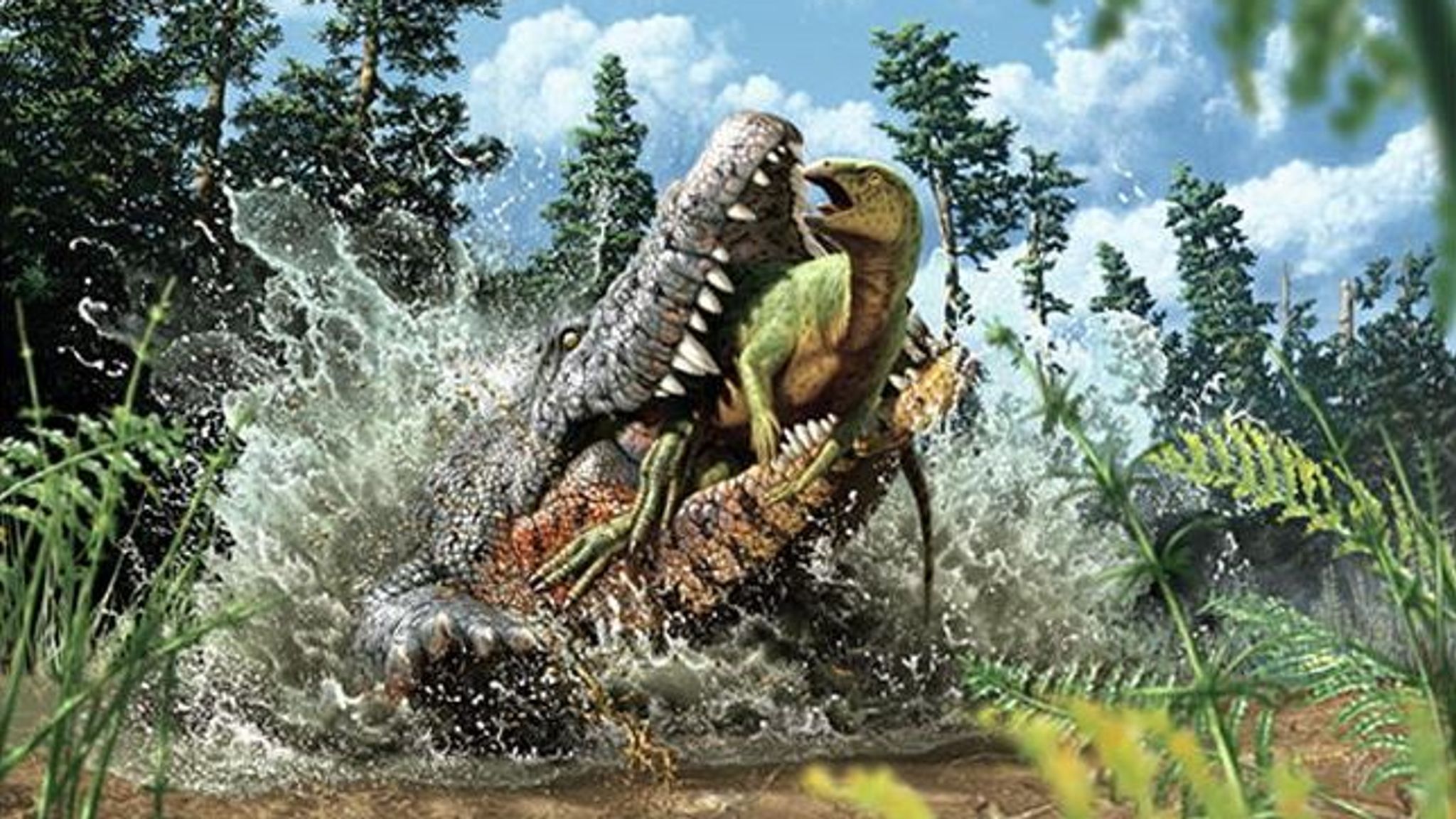Australian scientists have announced the discovery of not only a new species of crocodile, but also said that this crocodile’s last meal could be a dinosaur.
The fossilized remains of the crocodile, named Confractosuchus sauroktonos, were discovered at a sheep farm in the Australian state of Queensland and are believed to be more than 95 million years old.

While piecing together the fossilized bones of an ancient crocodile , researchers discovered the skeleton of a small juvenile carnivorous dinosaur inside the crocodile’s stomach.
Scientists say this is the first evidence of crocodiles eating dinosaurs in Australia.

The Australian Dinosaur Museum said: “The discovery of a small juvenile Ornithopod in the stomach of a Cretaceous crocodile is extremely rare, as there is little evidence of predation by the dinosaurs. globally known dinosaur “.
The fossil was first discovered and unearthed by museum staff and volunteers in 2010.

Crocodile fossil remains were found at a sheep farm in Queensland state. (Photo: Sky News)
Because the bone is so thin and densely embedded in a rock that it cannot be removed, Dr Joseph Bevitt, a scientist at the Australian Nuclear Science and Technology Organization (ANSTO), used micro-X-scanning technology. -optical neutron and synctron to locate the localized bone sections.
He then sent the scan data to Dr. Matt White, an associate researcher at the museum who digitally prepared the specimen, a project that involved 10 months of computer processing to create the specimen. produce a 3D reconstruction of the bone.
Dr White said the number of bones now is staggering, with 35 per cent of alligator bones preserved. The skeleton consists of an almost complete skull, but its tail and hind legs are missing.
Dr. White said: ” At the time of death, this freshwater crocodile was about 2.5m long and still growing. Although Confractosuchus is not a specialized dinosaur eater, it will not pass on its prey easily, such as the carcass of a young Ornithopod dinosaur found in its stomach “.

The skull of Confractosuchus (a and b) compared with today’s crocodilians and crocodilians. (Photo: Sky News)
Scientists were unable to identify the predation bird left in the crocodile’s stomach because it had been partially digested, but at the time of death the bird was a young and weighed up to 1.7kg.
The bones were found intact, which suggests that the crocodile could directly kill the young dinosaur or eat it quickly.
One of the Ornithopod femurs was cut in half and the other femur was bitten very hard, leaving tooth marks on the surface of the bone.
Dr White said: ” Given the absence of global specimens for comparison, this prehistoric crocodile and its last meal will continue to provide clues to the relationships and behavior of other species. animals that lived in Australia millions of years ago “.
Source: vtv.vn








